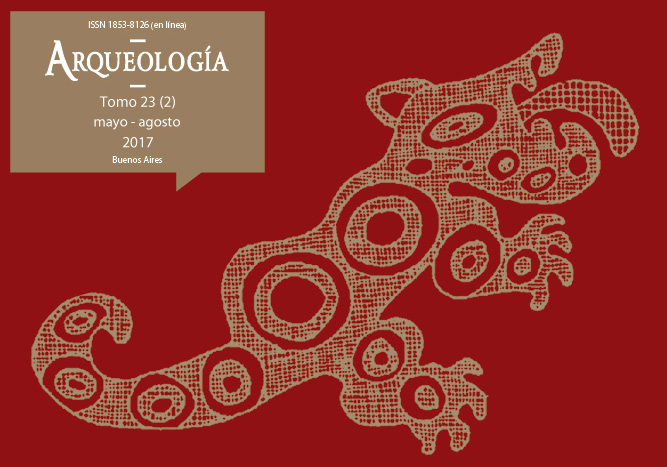Paleoenvironments and human ocupations at the Familia Primón site (Coronda, Santa Fe): An archaeopalynological contribution
Keywords:
Archaeopalynology, Familia Primon archaeological site, Paleoenvironment, Late Holocene
Abstract
In this paper, we present the results of pollen analysis carried out at the Familia Primon archaeological site, located in a transitional area of the Paraná River floodplain (Santa Fe, Argentina). The aim of this study was to undertake a preliminary analysis of the archaeopalynological assemblage, and thereby provide an insight into the availability of plant resources that might have been used by hunter-gatherers in the past. In so doing, the identification and interpretation of the pollen recovered from the site was carried out. The collated record shows a first pollen zone characterized by the predominance of herbaceous and arboreal-bushes, typical of a xerophilous forest. A second zone was observed around the 470±50 years BP mark. This zone suggests a relative increase in humidity, given the presence of typical vegetal taxa (v.g. Prosopis sp., Celtis sp. and Syagrus romanzoffiana) that have intrinsic qualities useful for the human subsistence.Downloads
Download data is not yet available.
How to Cite
Balducci, F., Garralla, S., & Sartori, J. (1). Paleoenvironments and human ocupations at the Familia Primón site (Coronda, Santa Fe): An archaeopalynological contribution. Arqueología, 23(2), 63-80. https://doi.org/10.34096/arqueologia.t23.n2.3778
Section
Articles
Authors who publish in this journal agree to the following conditions:
- Authors retain copyright and yield to the journal right of first publication with the work registered with attribution license Creative Commons, which allows third parties to use the published always mentioning the authorship of the work and first publication in this magazine.
- Authors can make other independent and additional contractual arrangements for the non-exclusive distribution of the version of the article published in this issue (p. Eg., Inclusion in an institutional repository or publish it in a book), provided that clearly indicate that the work was published for the first time in this magazine.
- It allows and encourages the author / s to publish their work online (eg institutional or personal pages) before and during the process of revision and publication, as it can lead to productive exchanges and greater and more rapid dissemination of work published (See The Effect of Open Access).





(1)13.png)






1.jpg)
1.jpg)


13.png)
1.png)


(1)1.png)









